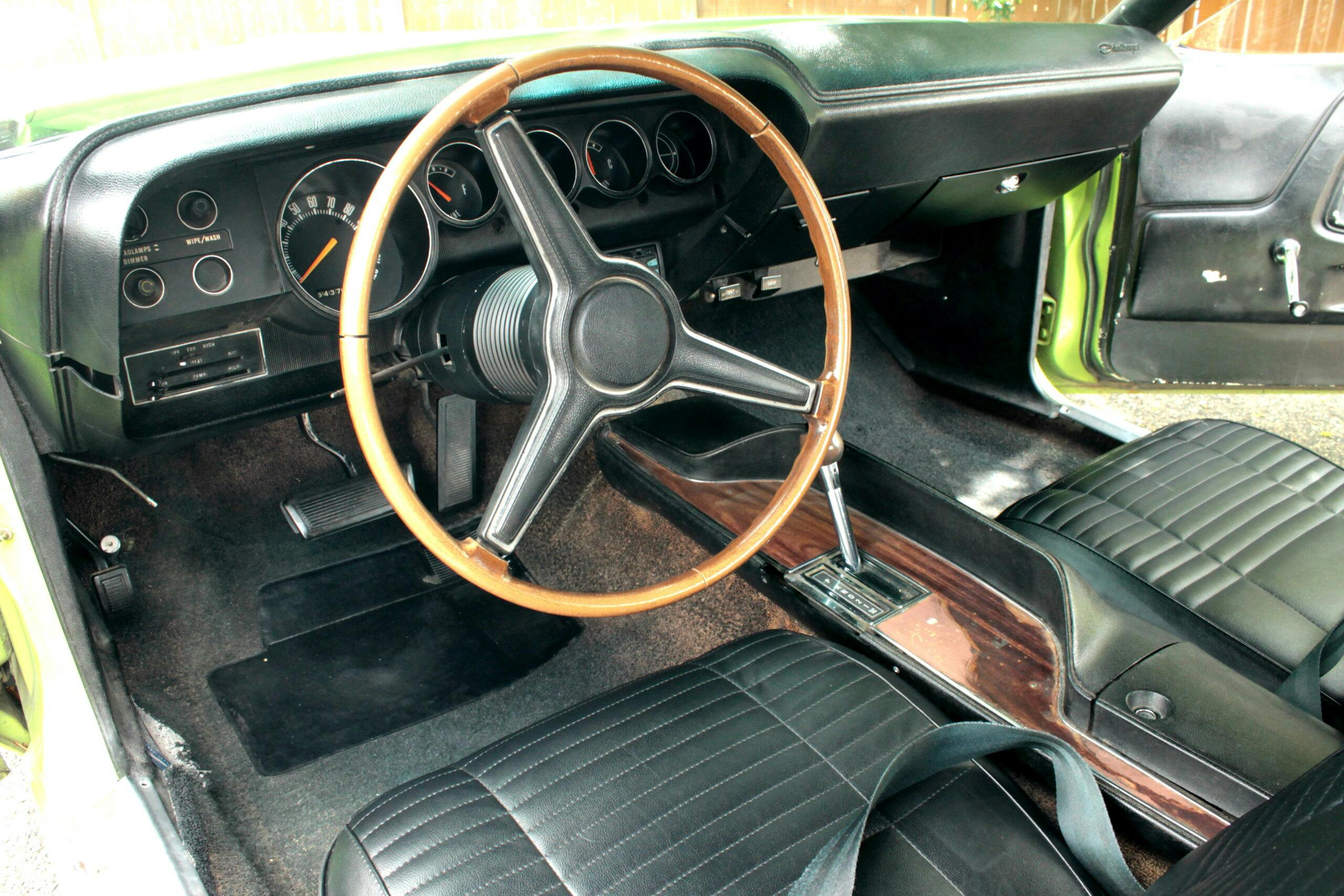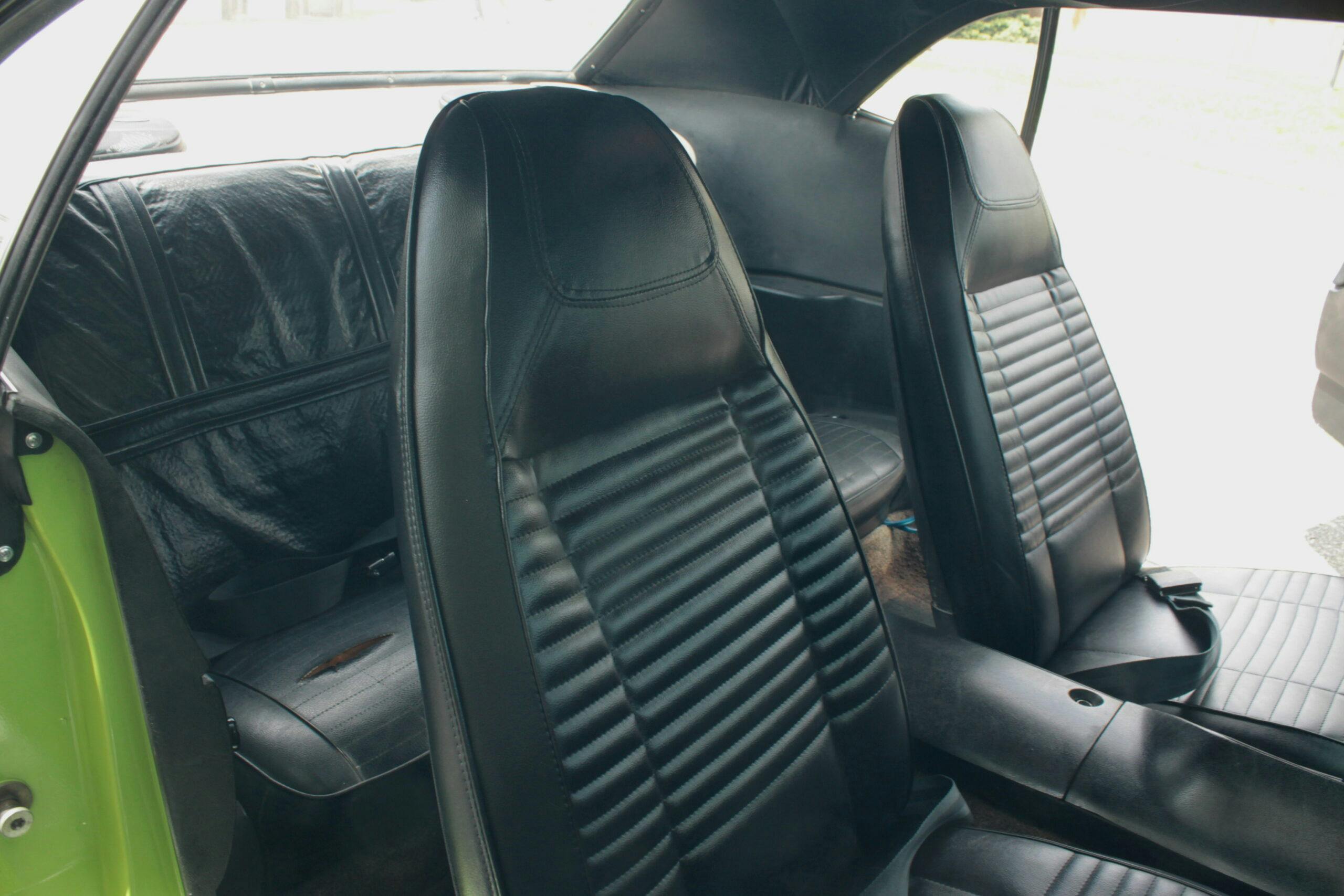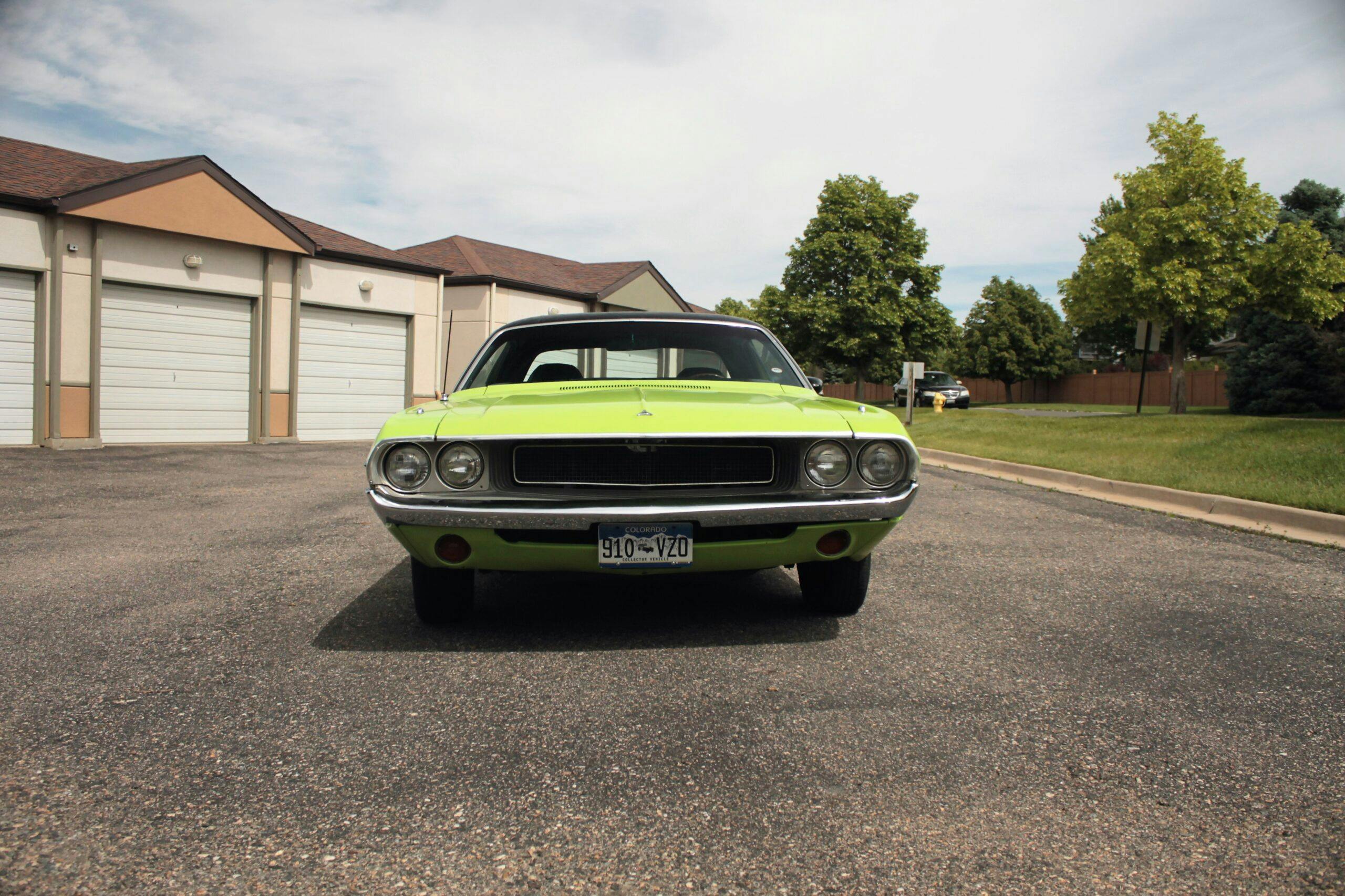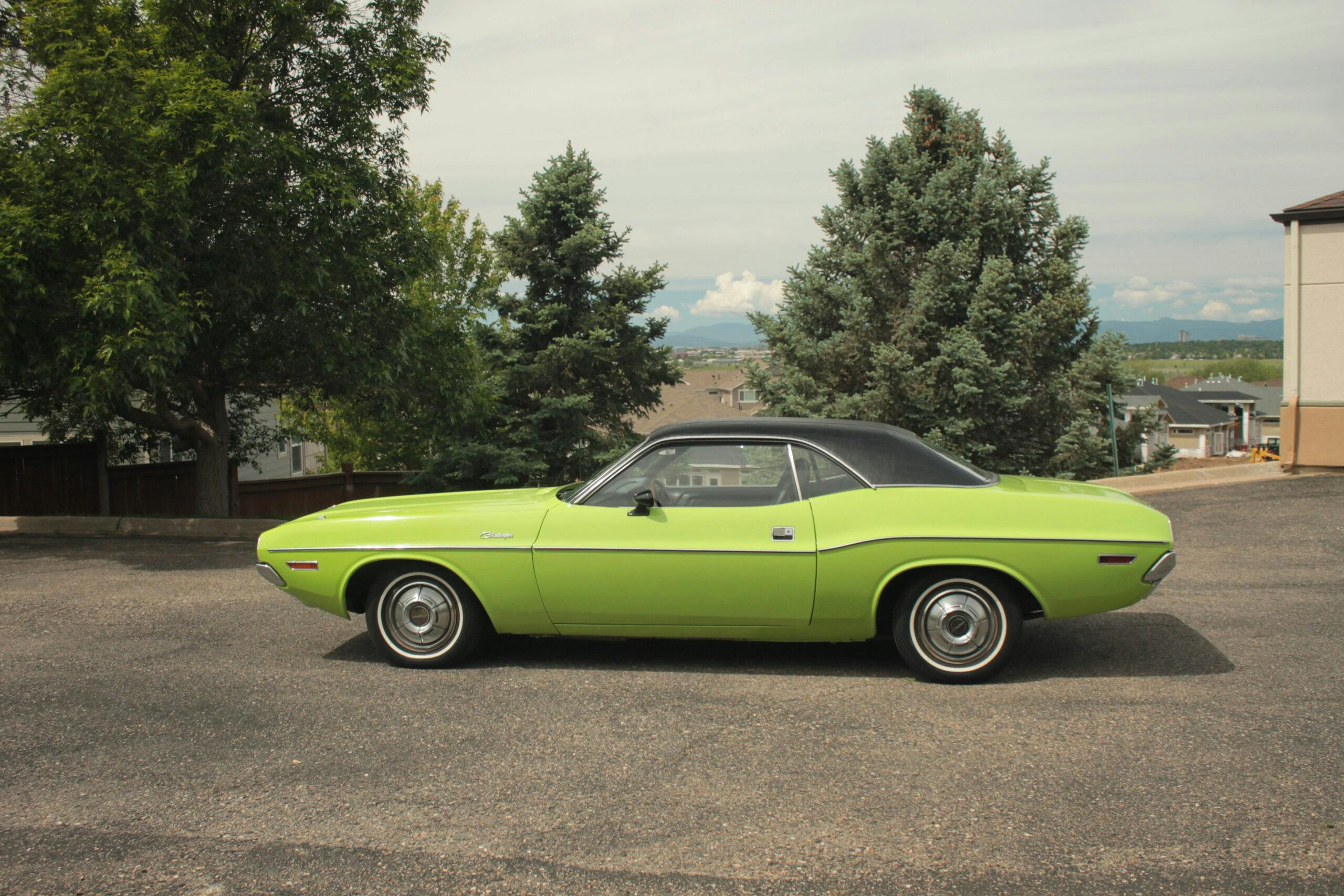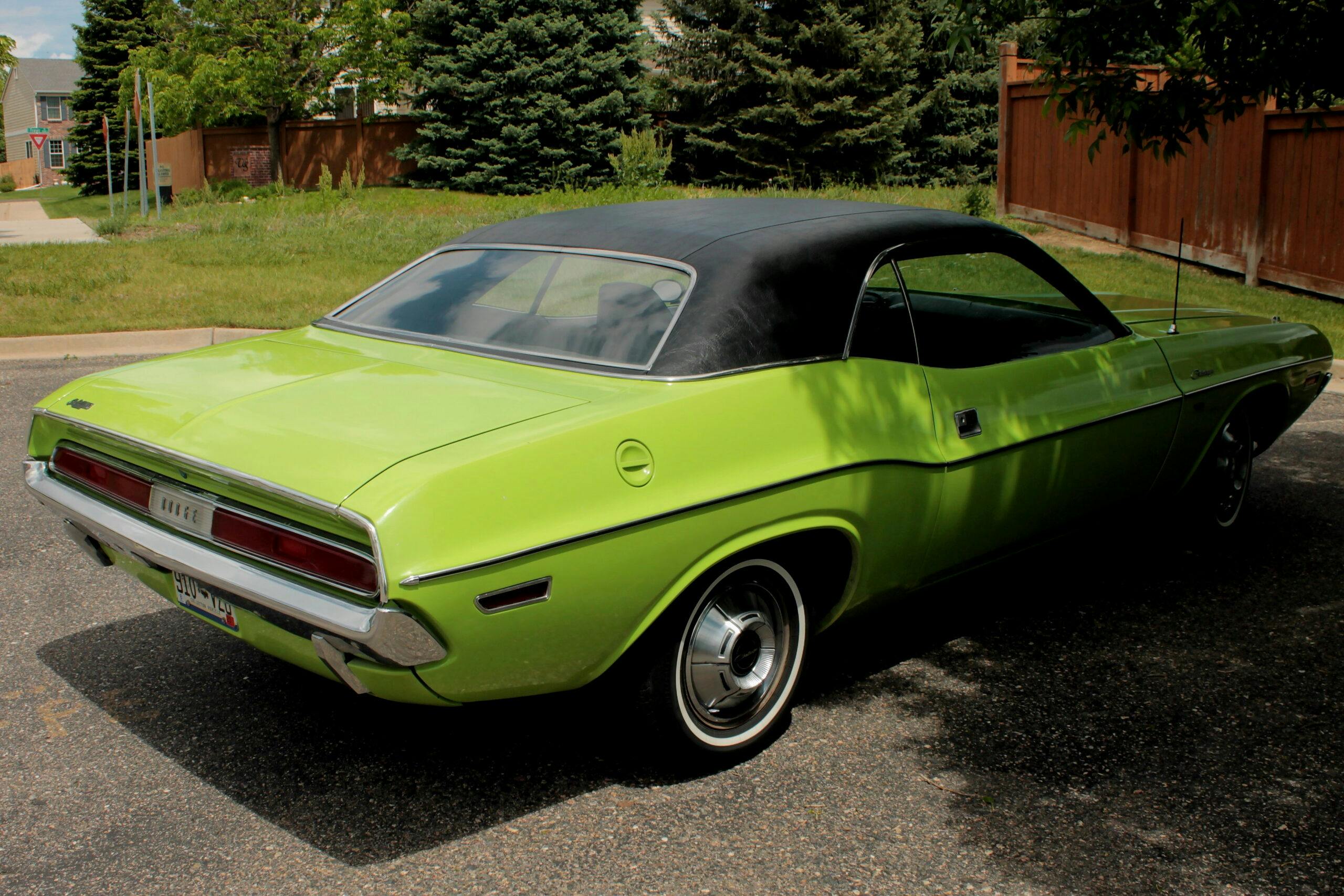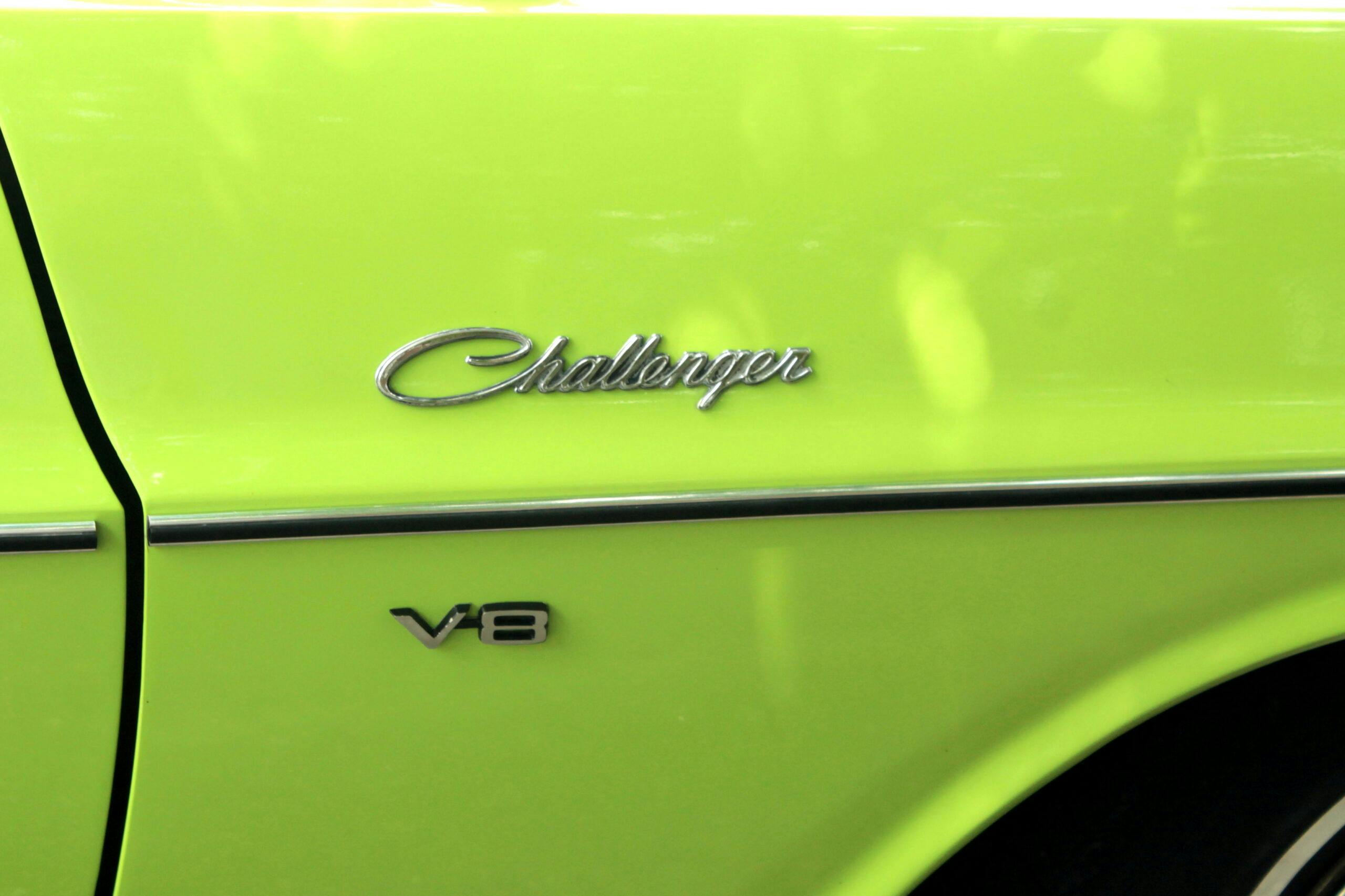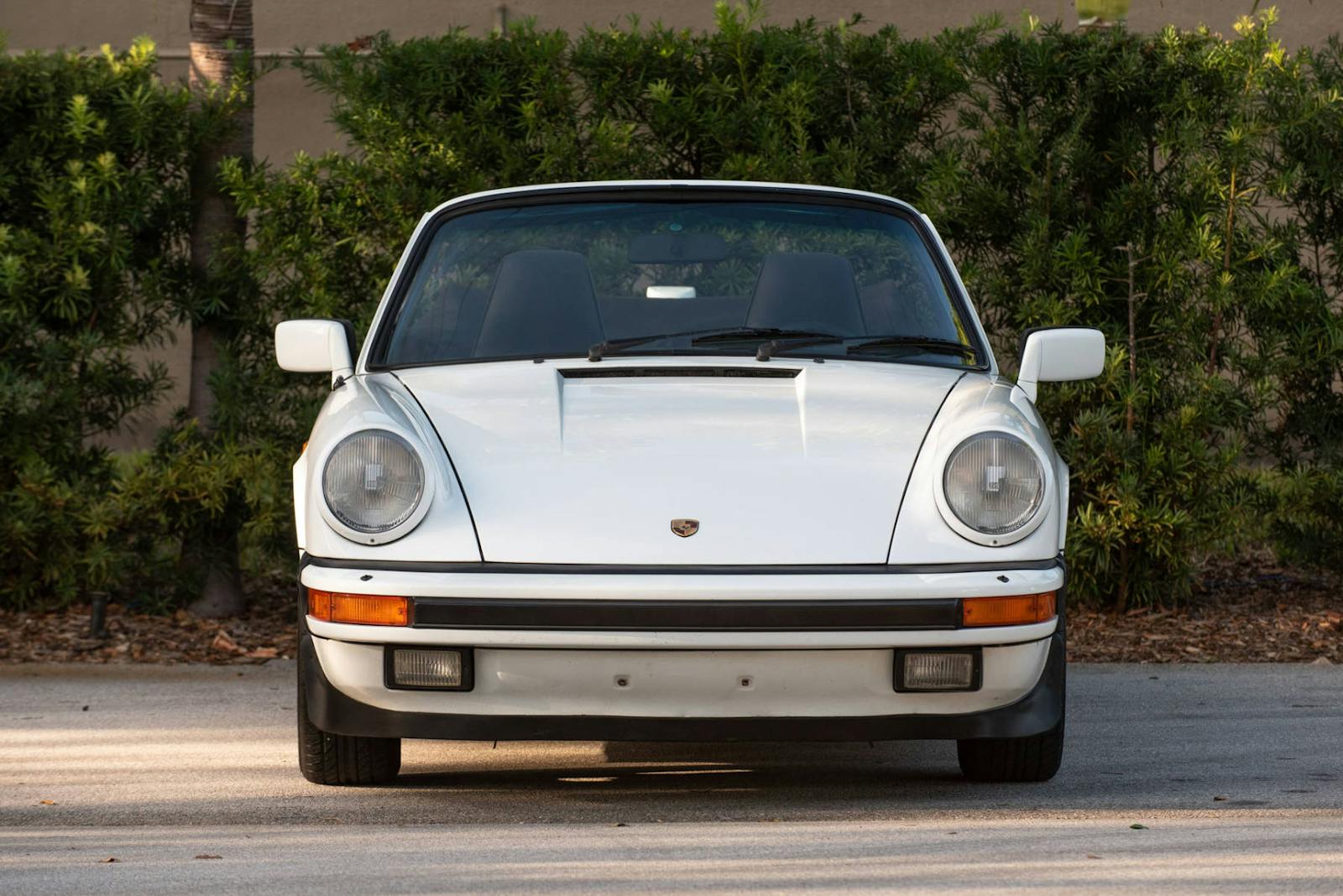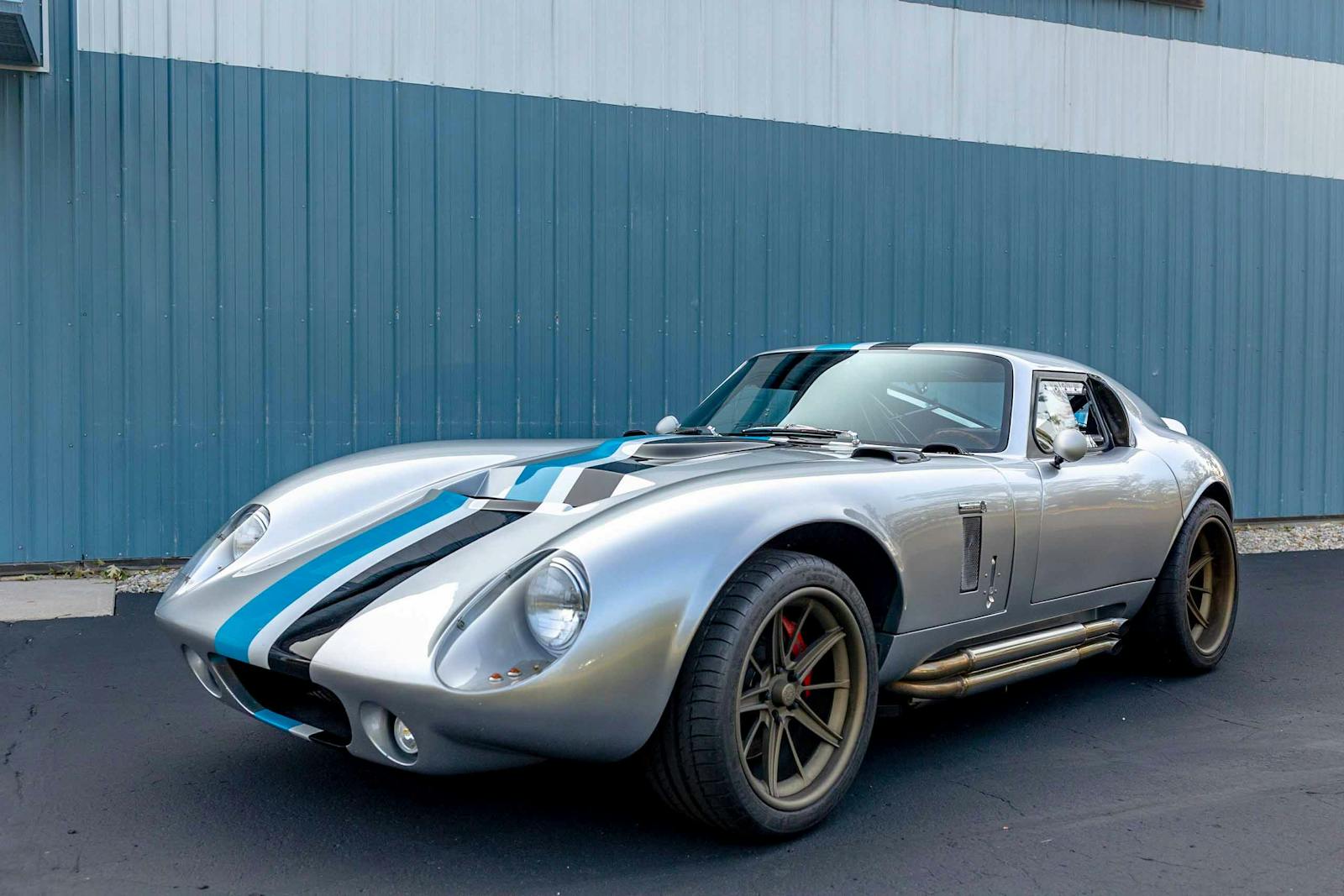Auction Pick of the Week: 1970 Dodge Challenger
If you’re going to be late to the party, why not be fashionably late? More than five years after Ford kicked off the pony-car wars by unveiling the Mustang, and three years after Chevrolet answered with the Camaro, the last of the Big Three automakers entered the fray with the 1970 Dodge Challenger.
The Mopar muscle machine, designed to compete with the Mercury Cougar and Pontiac Firebird, offered a slightly longer, 110-inch wheelbase and a spacious and well-appointed interior. Designed by Carl Cameron, who also penned the 1966 Dodge Charger, the E-body Challenger’s aggressive look included a long hood, short decklid, and low-slung stance.

The car, similar in appearance to its slightly shorter cousin, the Plymouth Barracuda, had power to match its badass looks; Dodge left no doubt that it intended the Challenger to be “the most potent pony car ever.” Offered as a two-door hardtop or convertible, the Challenger could be had with virtually every engine in Chrysler’s repertoire—eight in all—including seven eight-cylinder options ranging from a 230-horsepower, 318-cubic-inch V-8 to a thundering 455-hp, 426-cu-in Hemi V-8.
Among the transmission choices were three- and four-speed manuals, which could be equipped with a Hurst pistol-grip shifter, and Chrysler’s TorqueFlite automatic.

Paint colors were even more varied than the myriad engine choices, and some came with unforgettable names like Plumb Crazy, Sublime, Go Mango, Panther Pink, and Hemi Orange. Buyers could further customize their cars with twin-scooped hoods, “shaker” hoods, and rear deck wings.
According to the original Dodge brochure, the Challenger could be had in base and R/T (Road/Track) models in two-door hardtop, two-door convertible, and two-door hardtop SE (Special Edition) configurations. R/T upgrades included wood-grain finish on the dash and a blacked-out grille, and the SE package came with “vinyl roof, formal roof line with small rear window, leather and vinyl bucket seats, and many distinctive exterior trim touches.”
Wasting little time putting the car on the track—and in the spotlight—Dodge offered the Challenger as a limited-edition T/A model to meet homologation requirements for Sports Car Club of America (SCCA) Trans-Am racing. Sam Posey famously raced a Sublime-painted Challenger T/A in 1970, and although the No. 77 car didn’t win a race, Posey finished fourth overall in the series.
Dodge had hoped for sales of 200,000 cars annually, but 1970 turned out to be the Challenger’s best year, with only 83,032 sold. First-gen production ended after the 1974 model year. Among ’70 Challenger models, base hardtops were most common, with 53,337 sold, starting at $2851 ($22,347 today). The second-most popular Challengers that year were R/T hardtops, with 14,889 sold from $3266 ($25,600). The rarest ’70 version is the R/T convertible, with only 1070 built, starting at $3083 ($24,166).
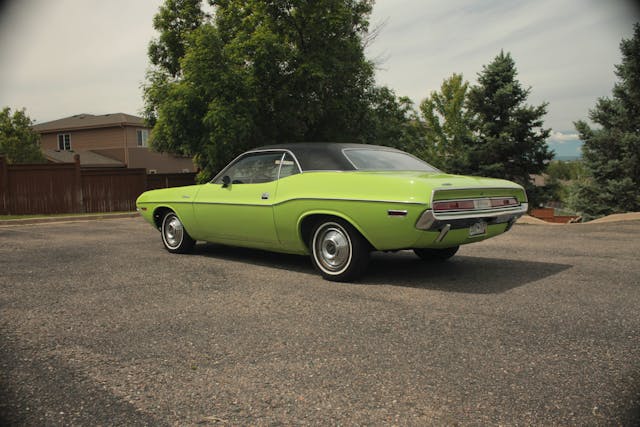
That brings us to this 1970 Dodge Challenger hardtop coupe on offer through Hagerty Marketplace. Although it is among the highest-production versions of the ’70 Challenger, the car is also among the rarest of classics: It was purchased new by its owner and has never changed hands in the 53 years since—until now.
Packing a 318-cu-in V-8 and wearing iconic Posey-preferred Sublime paint with a black vinyl roof, the Challenger was built in Los Angeles on March 31, 1970, and the cosigner took possession in April 1970 at Skyline Dodge in Denver, Colorado. The car underwent a complete frame-off restoration (performed by Wheels of Time LLC in Englewood, Colorado) beginning in 1998, and the engine was rebuilt in 2011 with larger pistons and a more aggressive camshaft.
Aside from the front bucket seats being rebuilt on the original frames in 2015, the interior is unrestored.
When ordering the car, the owner selected:
- Light Package (A01): ashtray light, glove box light, ignition light with time delay, map and courtesy light, instrument panel flood lamp, and fender-mounted turn signal indicators.
- Basic Group (A04): power steering, left remote control mirror, and a Music Master Radio.
- Three-speed automatic transmission (D31)
- Bucket Seats (C55)
- Three-speed Variable Wipers (J25)
- Drip Rail Moldings (M21)
- Console w/ Woodgrain (C16)
- Black Molding (V5X)
- Painted Driver Side Racing Mirror (Left)/Remote Adjusting (G34)
- Ungraded JVC head unit
- Larger capacity radiator
The Challenger’s odometer shows 54,372 miles; the consigner says the actual mileage is 154,372, as it was used on “rides to work, pursuing the woman who would become his wife, and even bringing his son home from the hospital,” and served as a family car, the second car, the third car, and even as his son’s high school car.

Among the Challenger’s known imperfections: The steering wheel is mounted upside down; the differential fill plug is reportedly stripped, as per a mechanic at the most recent oil change, which was performed earlier in 2023; the windshield washer tubing and nozzles are missing and the reservoir is original but cracked; the cigarette lighter and ashtray lights are inoperable; and some of the interior light bulbs are burned out and need replacing (but believed to function once replaced).
In addition, there is a rock chip on the passenger-side rear deck; the original chrome strips on the trunk lid show signs of wear and tear; and there is a small scratch on the passenger-side front fender near the turn signal, a rock chip on the driver-side door, and a large chip on the drive-side rearview mirror.

The Challenger was unfortunately involved in a front-end accident in 1994, but it was repaired then, in addition to its restoration four years later.
Included in the sale of the Colorado car are a spare tire, aftermarket jack, repair and tune-up guide, Budge car cover, and ownership history.
Here’s your chance to become only the second owner of this well-loved, pony car–era icon. The auction closes on Monday, July 10, at 4:20 p.m. Eastern.
***
Check out the Hagerty Media homepage so you don’t miss a single story, or better yet, bookmark it. To get our best stories delivered right to your inbox, subscribe to our newsletters.

